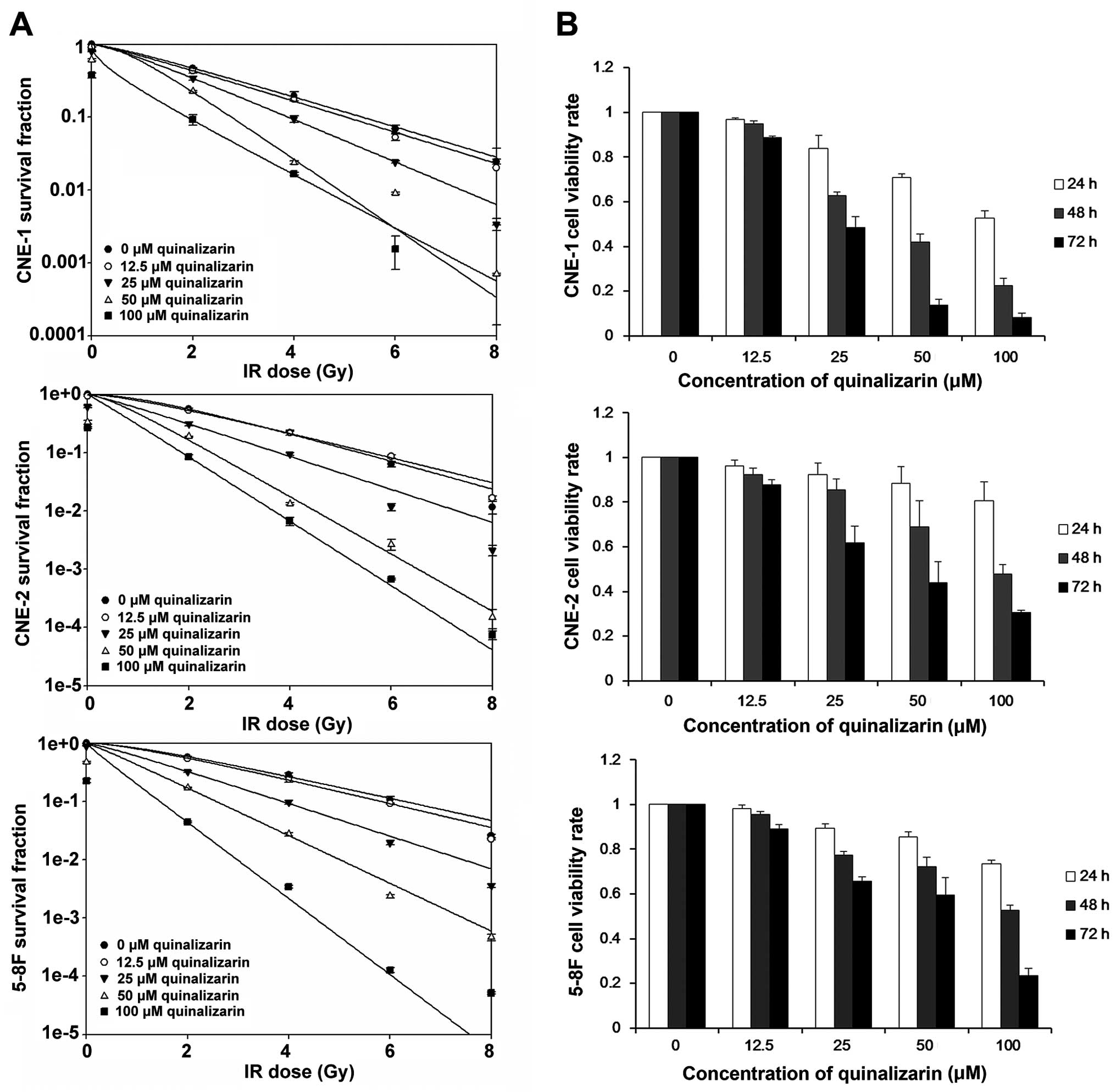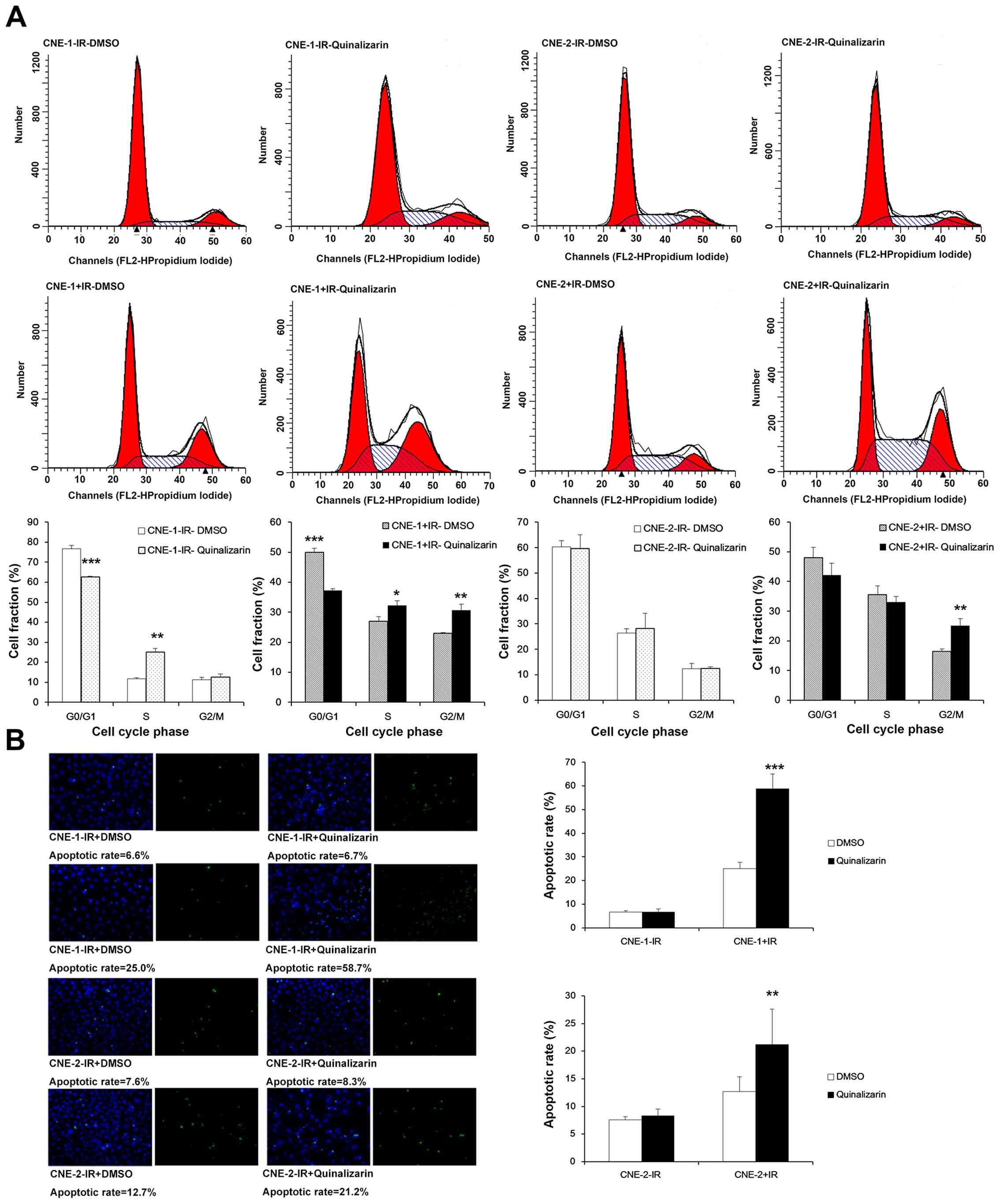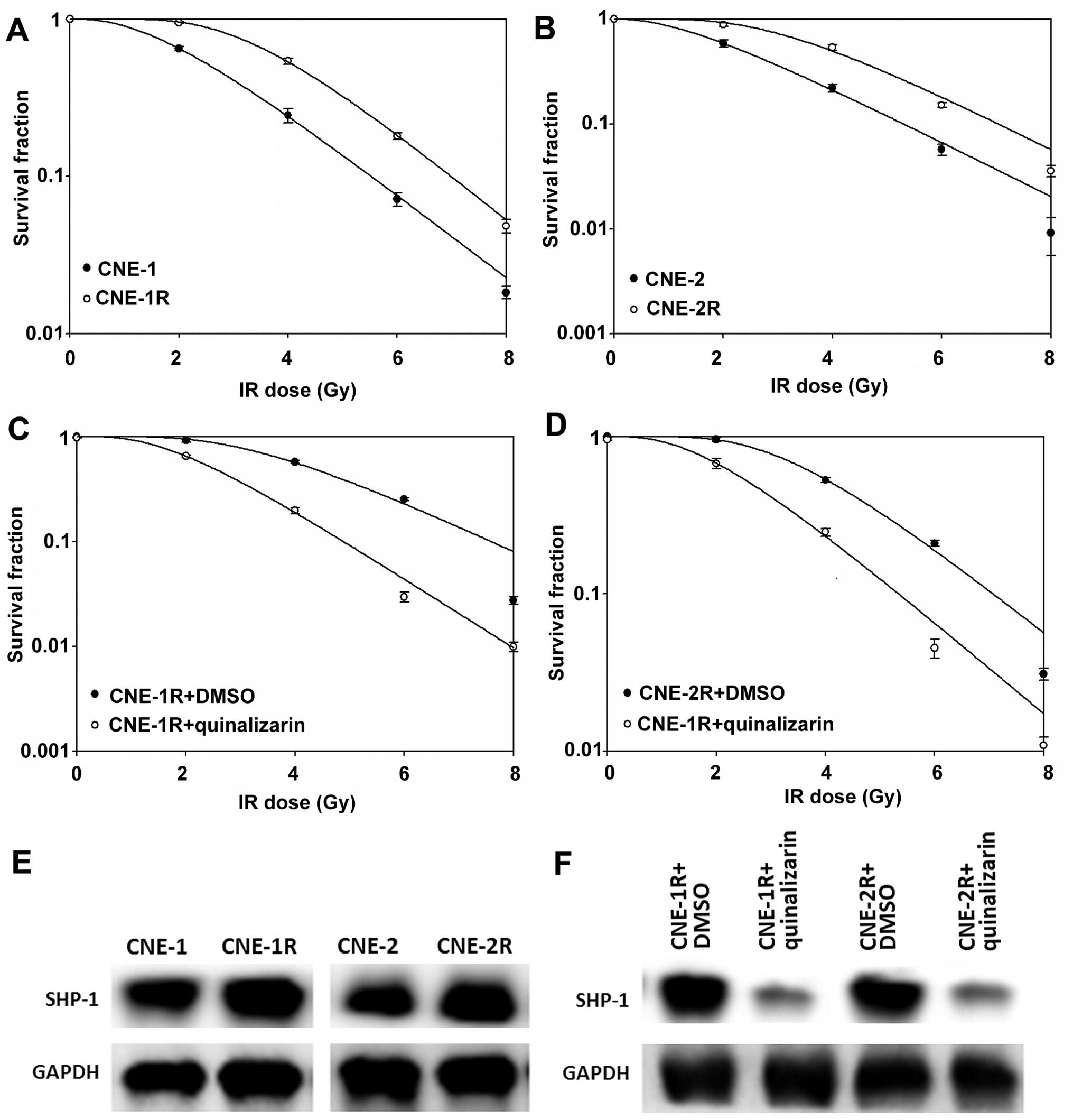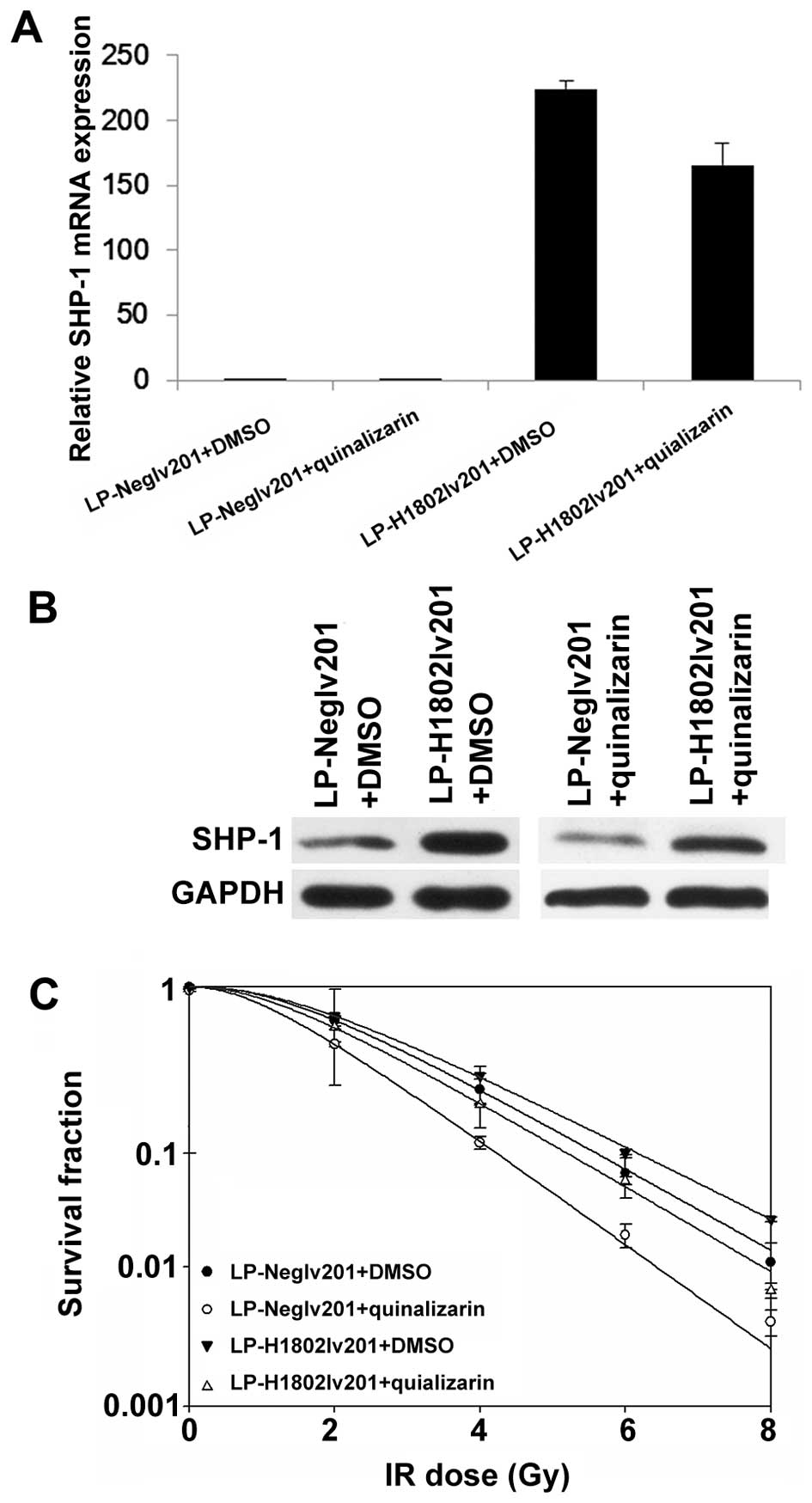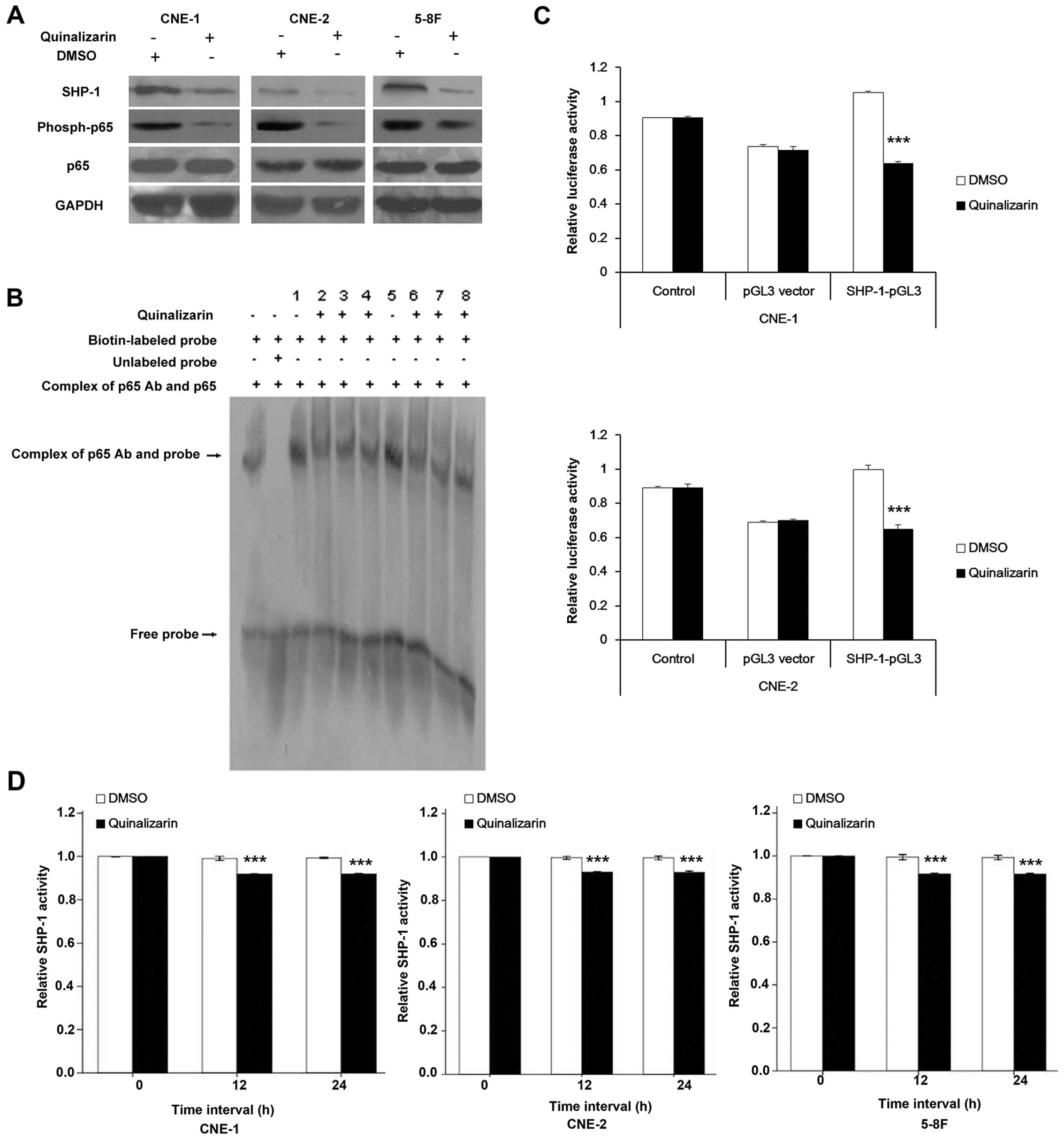|
1
|
Feng XP, Yi H, Li MY, Li XH, Yi B, Zhang
PF, Li C, Peng F, Tang CE, Li JL, et al: Identification of
biomarkers for predicting nasopharyngeal carcinoma response to
radiotherapy by proteomics. Cancer Res. 70:3450–3462. 2010.
View Article : Google Scholar : PubMed/NCBI
|
|
2
|
Iqbal N and Iqbal N: Imatinib: A
breakthrough of targeted therapy in cancer. Chemother Res Pract.
2014:3570272014.PubMed/NCBI
|
|
3
|
Sawyers C: Targeted cancer therapy.
Nature. 432:294–297. 2004. View Article : Google Scholar : PubMed/NCBI
|
|
4
|
Giamas G, Man YL, Hirner H, Bischof J,
Kramer K, Khan K, Ahmed SS, Stebbing J and Knippschild U: Kinases
as targets in the treatment of solid tumors. Cell Signal.
22:984–1002. 2010. View Article : Google Scholar : PubMed/NCBI
|
|
5
|
Widmer N, Bardin C, Chatelut E, Paci A,
Beijnen J, Levêque D, Veal G and Astier A: Review of therapeutic
drug monitoring of anticancer drugs part two - targeted therapies.
Eur J Cancer. 50:2020–2036. 2014. View Article : Google Scholar : PubMed/NCBI
|
|
6
|
Trembley JH, Chen Z, Unger G, Slaton J,
Kren BT, Van Waes C and Ahmed K: Emergence of protein kinase CK2 as
a key target in cancer therapy. Biofactors. 36:187–195. 2010.
View Article : Google Scholar : PubMed/NCBI
|
|
7
|
Gao Y and Wang HY: Casein kinase 2 is
activated and essential for Wnt/beta-catenin signaling. J Biol
Chem. 281:18394–18400. 2006. View Article : Google Scholar : PubMed/NCBI
|
|
8
|
Landesman-Bollag E, Song DH, Romieu-Mourez
R, Sussman DJ, Cardiff RD, Sonenshein GE and Seldin DC: Protein
kinase CK2: Signaling and tumorigenesis in the mammary gland. Mol
Cell Biochem. 227:153–165. 2001. View Article : Google Scholar
|
|
9
|
Trembley JH, Wang G, Unger G, Slaton J and
Ahmed K: Protein kinase CK2 in health and disease: CK2: a key
player in cancer biology. Cell Mol Life Sci. 66:1858–1867. 2009.
View Article : Google Scholar : PubMed/NCBI
|
|
10
|
Hagan CR, Regan TM, Dressing GE and Lange
CA: ck2-dependent phosphorylation of progesterone receptors (PR) on
Ser81 regulates PR-B isoform-specific target gene expression in
breast cancer cells. Mol Cell Biol. 31:2439–2452. 2011. View Article : Google Scholar : PubMed/NCBI
|
|
11
|
Zhu D, Hensel J, Hilgraf R, Abbasian M,
Pornillos O, Deyanat-Yazdi G, Hua XH and Cox S: Inhibition of
protein kinase CK2 expression and activity blocks tumor cell
growth. Mol Cell Biochem. 333:159–167. 2010. View Article : Google Scholar
|
|
12
|
Yefi R, Ponce DP, Niechi I, Silva E,
Cabello P, Rodriguez DA, Marcelain K, Armisen R, Quest AF and Tapia
JC: Protein kinase CK2 promotes cancer cell viability via
up-regulation of cyclooxygenase-2 expression and enhanced
prostaglandin E2 production. J Cell Biochem. 112:3167–3175. 2011.
View Article : Google Scholar : PubMed/NCBI
|
|
13
|
Olsen BB, Wang SY, Svenstrup TH, Chen BP
and Guerra B: Protein kinase CK2 localizes to sites of DNA
double-strand break regulating the cellular response to DNA damage.
BMC Mol Biol. 13:72012. View Article : Google Scholar : PubMed/NCBI
|
|
14
|
Lin YC, Hung MS, Lin CK, Li JM, Lee KD, Li
YC, Chen MF, Chen JK and Yang CT: CK2 inhibitors enhance the
radiosensitivity of human non-small cell lung cancer cells through
inhibition of stat3 activation. Cancer Biother Radiopharm.
26:381–388. 2011. View Article : Google Scholar : PubMed/NCBI
|
|
15
|
Pagano MA, Bain J, Kazimierczuk Z, Sarno
S, Ruzzene M, Di Maira G, Elliott M, Orzeszko A, Cozza G, Meggio F,
et al: The selectivity of inhibitors of protein kinase CK2: An
update. Biochem J. 415:353–365. 2008. View Article : Google Scholar : PubMed/NCBI
|
|
16
|
Cozza G, Mazzorana M, Papinutto E, Bain J,
Elliott M, di Maira G, Gianoncelli A, Pagano MA, Sarno S, Ruzzene
M, et al: Quinalizarin as a potent, selective and cell-permeable
inhibitor of protein kinase CK2. Biochem J. 421:387–395. 2009.
View Article : Google Scholar : PubMed/NCBI
|
|
17
|
Sarno S, de Moliner E, Ruzzene M, Pagano
MA, Battistutta R, Bain J, Fabbro D, Schoepfer J, Elliott M, Furet
P, et al: Biochemical and three-dimensional-structural study of the
specific inhibition of protein kinase CK2 by
[5-oxo-5,6-dihy-droindolo-(1,2-a)quinazolin-7-yl]acetic acid (IQA).
Biochem J. 374:639–646. 2003. View Article : Google Scholar : PubMed/NCBI
|
|
18
|
Lorenz U: SHP-1 and SHP-2 in T cells: Two
phosphatases functioning at many levels. Immunol Rev. 228:342–359.
2009. View Article : Google Scholar : PubMed/NCBI
|
|
19
|
Banville D, Stocco R and Shen SH: Human
protein tyrosine phosphatase 1C (PTPN6) gene structure: Alternate
promoter usage and exon skipping generate multiple transcripts.
Genomics. 27:165–173. 1995. View Article : Google Scholar : PubMed/NCBI
|
|
20
|
Evren S, Wan S, Ma XZ, Fahim S, Mody N,
Sakac D, Jin T and Branch DR: Characterization of SHP-1 protein
tyrosine phosphatase transcripts, protein isoforms and phosphatase
activity in epithelial cancer cells. Genomics. 102:491–499. 2013.
View Article : Google Scholar : PubMed/NCBI
|
|
21
|
Nakase K, Cheng J, Zhu Q and Marasco WA:
Mechanisms of SHP-1 P2 promoter regulation in hematopoietic cells
and its silencing in HTLV-1-transformed T cells. J Leukoc Biol.
85:165–174. 2009. View Article : Google Scholar :
|
|
22
|
Delibrias CC, Floettmann JE, Rowe M and
Fearon DT: Downregulated expression of SHP-1 in Burkitt lymphomas
and germinal center B lymphocytes. J Exp Med. 186:1575–1583. 1997.
View Article : Google Scholar : PubMed/NCBI
|
|
23
|
Oka T, Yoshino T, Hayashi K, Ohara N,
Nakanishi T, Yamaai Y, Hiraki A, Sogawa CA, Kondo E, Teramoto N, et
al: Reduction of hematopoietic cell-specific tyrosine phosphatase
SHP-1 gene expression in natural killer cell lymphoma and various
types of lymphomas/leukemias: Combination analysis with cDNA
expression array and tissue microarray. Am J Pathol. 159:1495–1505.
2001. View Article : Google Scholar : PubMed/NCBI
|
|
24
|
Sato K, Horiuchi M, Yo R and Nakarai I: A
long survival case of small cell lung cancer synchronized with
renal cancer]. Kyobu Geka. 44:251–253. 1991.In Japanese. PubMed/NCBI
|
|
25
|
Amin HM, Hoshino K, Yang H, Lin Q, Lai R
and Garcia-Manero G: Decreased expression level of SH2
domain-containing protein tyrosine phosphatase-1 (Shp1) is
associated with progression of chronic myeloid leukemia. J Pathol.
212:402–410. 2007. View Article : Google Scholar : PubMed/NCBI
|
|
26
|
López-Ruiz P, Rodriguez-Ubreva J, Cariaga
AE, Cortes MA and Colás B: SHP-1 in cell-cycle regulation.
Anticancer Agents Med Chem. 11:89–98. 2011. View Article : Google Scholar : PubMed/NCBI
|
|
27
|
Peng G, Cao R, Xue J, Li P, Zou Z, Huang J
and Ding Q: Increased expression of SHP-1 is associated with local
recurrence after radiotherapy in patients with nasopharyngeal
carcinoma. Radiol Oncol. 48:40–49. 2014. View Article : Google Scholar : PubMed/NCBI
|
|
28
|
Peng G, Cao RB, Li YH, Zou ZW, Huang J and
Ding Q: Alterations of cell cycle control proteins SHP-1/2, p16,
CDK4 and cyclin D1 in radioresistant nasopharyngeal carcinoma
cells. Mol Med Rep. 10:1709–1716. 2014.PubMed/NCBI
|
|
29
|
Cao R, Ding Q, Li P, Xue J, Zou Z, Huang J
and Peng G: SHP1-mediated cell cycle redistribution inhibits
radiosensitivity of non-small cell lung cancer. Radiat Oncol.
8:1782013. View Article : Google Scholar : PubMed/NCBI
|
|
30
|
Hall EJ and Giaccia A: Cell survival
curves. Radiobiology for the Radiologist. Lippincott Williams &
Wilkins; New York, NY: 2011
|
|
31
|
Peng G, Cao RB, Li YH, Zou ZW, Huang J and
Ding Q: Alterations of cell cycle control proteins SHP-1/2, p16,
CDK4 and cyclin D1 in radioresistant nasopharyngeal carcinoma
cells. Mol Med Rep. 10:1709–1716. 2014.PubMed/NCBI
|
|
32
|
Kroonen J, Artesi M, Capraro V,
Nguyen-Khac MT, Willems M, Chakravarti A, Bours V and Robe PA:
Casein kinase 2 inhibition modulates the DNA damage response but
fails to radiosensitize malignant glioma cells. Int J Oncol.
41:776–782. 2012.PubMed/NCBI
|
|
33
|
Liu L, Zou JJ, Luo HS and Wu DH: Effect of
protein kinase CK2 gene silencing on radiosensitization in human
nasopharyngeal carcinoma cells. Nan Fang Yi Ke Da Xue Xue Bao.
29:1551–1553. 2009.In Chinese. PubMed/NCBI
|
|
34
|
Pan X, Mou J, Liu S, Sun Z, Meng R, Zhou
Z, Wu G and Peng G: SHP-1 overexpression increases the
radioresistance of NPC cells by enhancing DSB repair, increasing S
phase arrest and decreasing cell apoptosis. Oncol Rep.
33:2999–3005. 2015.PubMed/NCBI
|
|
35
|
Wu C, Sun M, Liu L and Zhou GW: The
function of the protein tyrosine phosphatase SHP-1 in cancer. Gene.
306:1–12. 2003. View Article : Google Scholar : PubMed/NCBI
|



